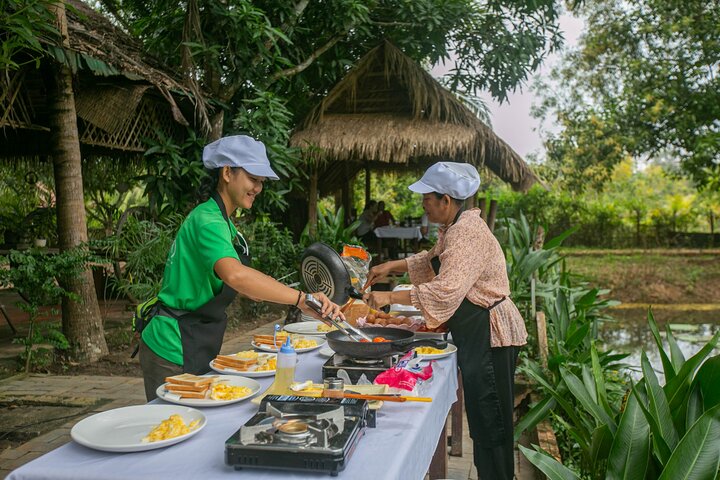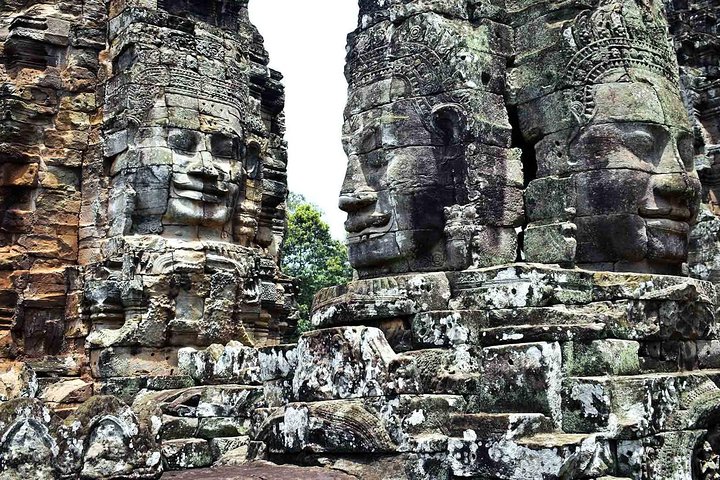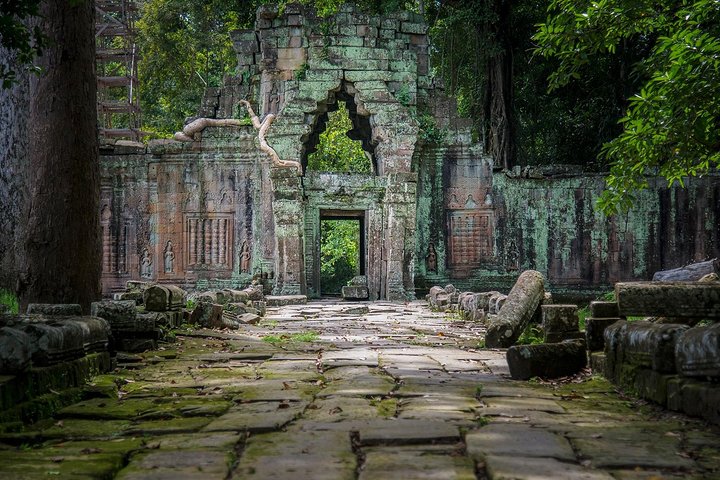Journey Through Time: Exploring the Khmer Temples of Angkor
Embark on a journey through the heart of Cambodia’s ancient Khmer temples. Discover the stories and artistry of Angkor Wat, the Roluos Group, and the floating village of Kampong Phluk. Join me as I explore the rich cultural heritage of this enchanting land.
Day 1: The Dawn of Angkor Wat
As the first light of dawn began to break, I found myself standing in awe before the majestic silhouette of Angkor Wat. The air was crisp, and the anticipation of witnessing the sunrise over this ancient wonder was palpable. The temple, a testament to the grandeur of the Khmer Empire, stood as a silent guardian of history, its intricate carvings whispering tales of a bygone era.
Our guide, Vutha, was a fountain of knowledge, weaving stories of the past with the present. His passion for the history of Angkor was infectious, and as we explored the South Gate of Angkor Thom, the Bayon Temple, and the Terrace of the Elephants, I felt a deep connection to the cultural tapestry of Cambodia. Each stone seemed to hold a piece of the past, and Vutha’s insights brought them to life.
The day unfolded like a dream, with each temple offering a unique glimpse into the spiritual and artistic achievements of the Khmer civilization. From the enigmatic faces of Bayon to the jungle-clad ruins of Ta Prohm, where nature and architecture entwine in a timeless embrace, the experience was nothing short of magical. As the sun set over the serene waters of Sras Srang, I felt a profound sense of gratitude for the opportunity to witness such beauty.
Day 2: The Heart of Khmer Heritage
The second day of our journey took us beyond the well-trodden paths of Angkor to the Roluos Group, the cradle of Khmer civilization. These ancient temples, dating back to the 9th century, were a revelation. The simplicity of their brick towers, adorned with sandstone carvings, spoke of a time when the Khmer Empire was in its infancy.
Vutha’s guidance was invaluable as we explored Bakong, Lolei, and Preah Ko. His stories of King Jayavarman II and the founding of Hariharalaya painted a vivid picture of the empire’s early days. The temples, though weathered by time, stood resilient, their beauty undiminished.
Our journey continued to Kampong Phluk, a floating village on the Tonle Sap Lake. Here, life unfolds on the water, with houses perched on stilts to withstand the seasonal floods. The community’s resilience and adaptability were inspiring, and as we navigated the waterways, I was struck by the harmony between the people and their environment. The floating forest, a surreal landscape of submerged trees, added to the enchantment of the day.
Day 3: The Grand Circuit and Beyond
Our final day was a celebration of the artistic and architectural brilliance of the Khmer Empire. We ventured to the grand circuit of Angkor, where the temples of Preah Khan, Neak Pean, and Ta Som awaited. Each site was a masterpiece, showcasing the empire’s mastery of stone and space.
The highlight of the day was Banteay Srei, the jewel of Angkorian art. Its delicate carvings, rendered in pink sandstone, were breathtaking in their detail and precision. Vutha’s explanations of the temple’s significance and symbolism enriched the experience, allowing me to appreciate the artistry on a deeper level.
As we concluded our journey at Kbal Spean, the “River of a Thousand Lingas,” I reflected on the profound connection between the land, its people, and their spiritual beliefs. The carvings in the riverbed, a testament to the devotion of the Khmer people, were a fitting end to our exploration.
This three-day adventure was more than just a tour; it was a journey through time, a chance to immerse myself in the rich cultural heritage of Cambodia. The memories of Angkor’s temples, the warmth of its people, and the wisdom of our guide, Vutha, will stay with me forever. For those seeking a deeper understanding of Southeast Asia’s history and culture, this experience is not to be missed.









































